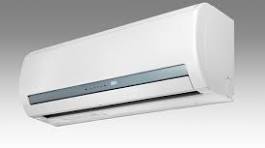Global Air Conditioners Market Size, Growth, and Outlook
Overview of the Global Air Conditioners Market
The Air Conditioner Market, valued at approximately US$148.57 billion in 2023, is expected to grow significantly, reaching US$257.20 billion by 2032 at a compound annual growth rate (CAGR) of 6.29% from 2024 to 2032. This growth is driven by increased demand for cooling solutions due to rising global temperatures, urbanization, and technological advancements in energy-efficient models.
Explore the Global Air Conditioners Market Report
Key Market Drivers
- Urbanization and Rising Disposable Incomes
- Rapid urbanization and increasing disposable incomes, especially in emerging economies, are major drivers of market growth. Developing regions like Asia-Pacific and Latin America, with expanding middle-class populations, have seen increased demand for residential and commercial air conditioning solutions.
- Higher income levels are enabling consumers to invest in energy-efficient and smart air conditioning systems, further boosting the market. This shift toward modern infrastructure, such as smart homes and buildings, is driving demand for HVAC systems across these regions.
- Impact of Climate Change and Rising Temperatures
- Climate change and rising global temperatures are intensifying the need for air conditioning. Consumers across all demographics are investing in air conditioning solutions to combat the increasing frequency and intensity of heatwaves. This trend is particularly evident in areas that previously enjoyed moderate climates, now experiencing prolonged warm seasons.
- The impact of rising temperatures has spurred technological advancements within the industry, with manufacturers focusing on eco-friendly solutions and sustainable refrigerants, addressing both consumer demand and environmental concerns.
- Technological Innovations and Smart Features
- Technological advancements, particularly the integration of smart features, are reshaping the air conditioning market. Smart air conditioners allow for remote access, temperature control via smartphone apps, and are compatible with IoT platforms.
- Newer models with inverter technology and AI-based temperature regulation offer enhanced performance and energy efficiency, appealing to consumers seeking comfort and cost-effective cooling solutions. The development of such smart and energy-efficient models is pivotal, especially in areas with high electricity costs.
Regional Market Insights: The Asia Air Conditioners Market
The Asia-Pacific region represents one of the fastest-growing markets in the air conditioning sector. With rapid urbanization and rising disposable incomes, countries like China, India, Japan, and South Korea lead the region’s air conditioner market. Rising temperatures due to climate change and an expanding middle class further fuel the adoption of air conditioning systems, particularly in residential areas.
- The demand for eco-friendly and energy-efficient air conditioners is growing, as governments in the region encourage sustainable practices. The adoption of smart air conditioning solutions, especially in tech-driven markets like South Korea and Japan, is seeing steady growth, thanks to a consumer preference for comfort, energy efficiency, and remote-control features.
- Construction activities across the region are also driving market growth, as residential, commercial, and industrial facilities are integrated with modern cooling systems.
Explore the Asia Air Conditioners Market Report
Industry Trends: Increasing Demand for Room Air Conditioners
Room air conditioners dominate the market, particularly in residential applications. Room air conditioners can be categorized into window-type and split-type systems, each meeting various cooling requirements in homes, offices, and small commercial spaces. Given their affordable price points and high cooling efficiency, split-type air conditioners are especially popular in urban areas.
Commercial air conditioners, such as Packaged Air Conditioners (PAC) and Variable Refrigerant Flow (VRF) systems, are more commonly found in large buildings and corporate settings where larger cooling capacities are required.
Countries with High Market Demand:
- United States: Room and commercial air conditioners have strong demand due to seasonal temperature fluctuations and lifestyle preferences.
- China and India: Rapid urbanization and large populations make these countries primary consumers of room air conditioning units.
- Europe: Countries like the UK, Germany, and Italy are focusing on energy-efficient systems due to the EU’s strict environmental regulations.
Innovations in the Market: Focus on Smart and Sustainable Air Conditioning
Technological advancements have become a hallmark of the global air conditioning market. Notable advancements include:
- Smart Air Conditioners: Integrated with IoT, these units allow users to adjust settings remotely, enabling energy savings and convenience. AI capabilities in these systems also offer real-time adjustments based on the ambient temperature, minimizing energy waste.
- Sustainable Cooling Solutions: As environmental concerns grow, the air conditioning industry is focusing on using eco-friendly refrigerants and energy-efficient systems to reduce the carbon footprint of cooling solutions.
- Anti-Leak Technology: In February 2023, Godrej Appliances introduced a leak-proof split air conditioner in India, aiming to offer customers greater durability and improved cooling performance. This innovation highlights the industry’s commitment to quality and enhanced user experience.
Explore more about the Europe Air Conditioners Market
Competitive Landscape: Leading Companies in the Air Conditioning Market
Prominent players in the global air conditioner market, such as Daikin Industries, Carrier, Electrolux, Emerson Electric, Hitachi-Johnson Controls, Trane Technologies, Mitsubishi Heavy Industries, and Ingersoll-Rand, drive innovation through extensive product portfolios and market presence.
These companies have invested in developing energy-efficient models that align with consumer needs and sustainability goals. As a result, they continue to hold a strong market share by meeting the rising demand for smart, energy-efficient, and affordable air conditioning units.
The Future of the Air Conditioning Market
With the expected growth from US$148.57 billion in 2023 to US$257.20 billion by 2032, the air conditioning market will continue to expand due to urbanization, climate change, and technological advancements. The industry’s shift towards energy-efficient and sustainable solutions aligns with global environmental concerns, appealing to a wide array of consumer segments and geographic regions.
The increasing demand for connected, smart air conditioners that offer real-time monitoring, enhanced energy efficiency, and convenience signifies a promising future for the industry. As more regions adopt green regulations, manufacturers are expected to innovate further, meeting both performance and environmental requirements.
Related Links:
Media Contact: Renub Research
- Contact Person: Rajat Gupta, Marketing Manager
- Phone: +1-478-202-3244 | +91-120-421-9822
- Email: info@renub.com
